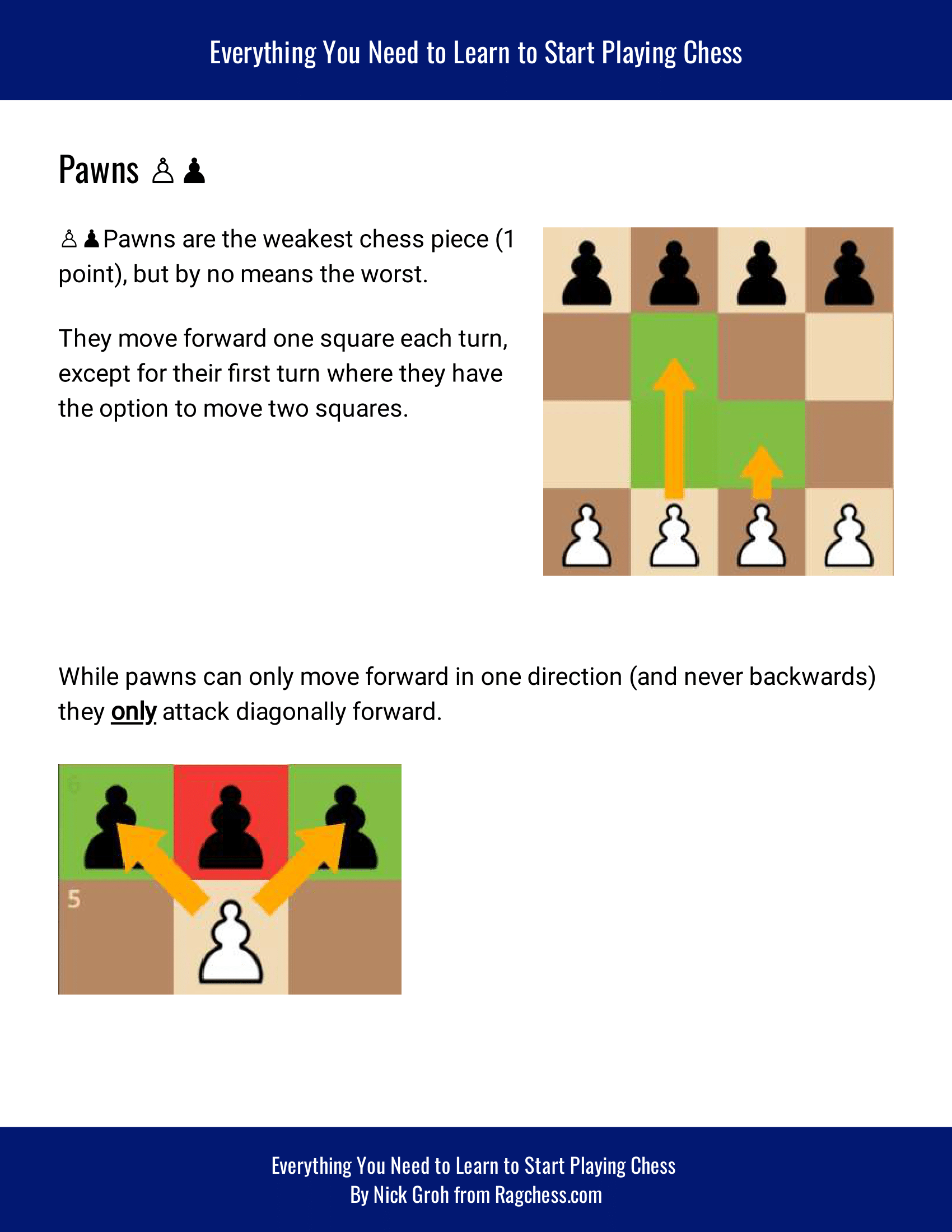

Your board evaluation function could change during the game. You'll explore these ideas fully in Artificial Intelligence. There are many algorithms for finding the best move by looking many moves ahead, such as minimax and alpha-beta pruning.
CHESS PIECES MOVES CODE CODE
And then see what you could do, then what they would do, etc. Based on Philipp Stammas short algebraic chess notation, a move can be described by the moving piece code and destination square. It would be better if you could "look ahead" further and see the results of what your opponent could do, given what your proposed move did. a chess board for example, the following code typesets two boards using. Static analysis on the next move's state can only do so much good. To record the movement of a chess-piece you need to identify the piece and its. It is good that your opponent's King has no valid moves.It is good to threaten opponent pieces.Encourage them to get to the back row (eg, the closer they are to the opposite side, the better). Pawns get promoted when they get to the back row. can_claim_draw (): msg = "draw: claim" if visual is not None : print ( msg ) return ( result, msg, board ) is_insufficient_material (): msg = "draw: insufficient material" elif board. is_fivefold_repetition (): msg = "draw: 5-fold repetition" elif board. is_stalemate (): msg = "draw: stalemate" elif board. The earliest systems of notation used lengthy narratives to describe each move these gradually evolved into more compact notation systems. Chess notation is used in chess literature, and by players keeping a record of an ongoing game. A bishop cannot jump over other pieces on its movement. Chess notation systems are used to record either the moves made or the position of the pieces in a game of chess. is_checkmate (): msg = "checkmate: " + who ( not board. A bishop can move diagonally but the destination must lie within the border of the chess board. 4 possible moves maximally if board x y 'bPawn': potentialmoves.append ( x+1, y) if the pawn is in the second rank (has not moved) try. sleep ( pause ) except KeyboardInterrupt : msg = "Game interrupted!" return ( None, msg, board ) result = None if board. def enumeratemoves (x, y): potentialmoves moves before clean up function - resolve pawn moves.

move_stack ), name, uci, board_stop ) if visual is not None : if visual = "svg" : clear_output ( wait = True ) display ( HTML ( html )) if visual = "svg" : time. push_uci ( uci ) board_stop = display_board ( board, use_svg ) html = "Move %s %s, Play ' %s ': %s " % ( len ( board. WHITE : uci = player1 ( board ) else : uci = player2 ( board ) name = who ( board. is_game_over ( claim_draw = True ): if board. Positions= new Knight(Player.Def play_game ( player1, player2, visual = "svg", pause = 0.1 ): """ playerN1, player2: functions that takes board, return uci move visual: "simple" | "svg" | None """ use_svg = ( visual = "svg" ) board = chess. There is nothing in your code to stop adding potential moves when a blocking piece is encountered, all it does is not add the blocking piece's own location to the potential moves. Moving chess pieces in native javascript Ask Question Asked 8 years, 5 months ago Modified 4 years, 2 months ago Viewed 6k times -3 I'm having some problems with my assignment, which was to make chess pieces move freely across the board without the use of ids in native javascript. Rect(35+80*x, 135+80*(posY-x+posX), 80, 80) The code and the image seem to show that this does find all the spaces that bishop could move to, if other pieces weren't in the way. The rooks sit on the far corners of the game board and they are the primary. On all subsequent turns, they may only move one space. On the first move, a pawn may move forward one or two spaces. Up 10, down -10, up and right diagonal 11 etc. The sentinels have a depth of two so that a knight can't jump over. a 255 to indicate that a piece can't move to this square). The way pawns are arranged on the board is called the pawn structure. This is a chessboard of 8x8 surrounded by sentinel squares (e.g. Rect(35+80*x, 135+80*(posY+x-posX), 80, 80) ĬhessMan at = field.getAt(x, posY-x+posX) The rooks are the second-best chess pieces, not to the pawns but to the queens. The pawn is the lowest-value piece on the chessboard, and there are eight pawns per player. While the bishop on the dark-colored square can move only on the light-colored square as you can see in the picture above. Note that a bishop on a light-colored square can move only on the light-colored square. Image(getImage(), 40+80*posX, 135+80*posY, width/10, height/12) ĬhessMan at = field.getAt(x, posY+x-posX) A bishop captures any chess piece that comes in its way of movement.

PImage KingW, KingB, RookW, RookB, QueenW, QueenB, BishopW, BishopB, PawnW, PawnB, KnightW, KnightB I recently started to programm a simple chess game for 2 players.


 0 kommentar(er)
0 kommentar(er)
